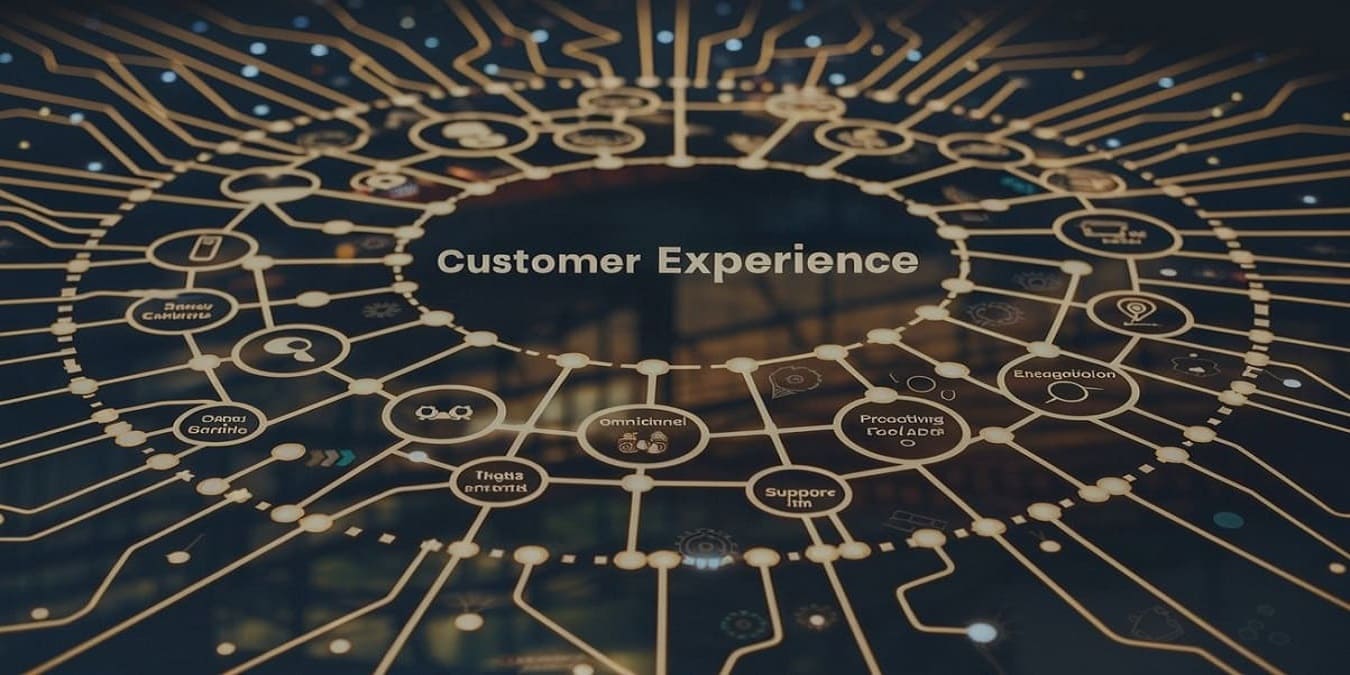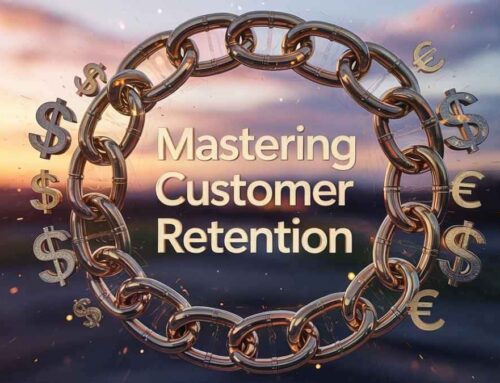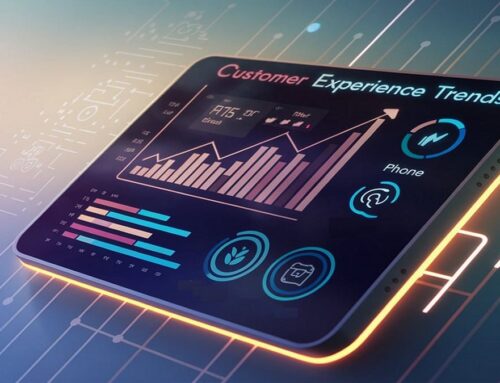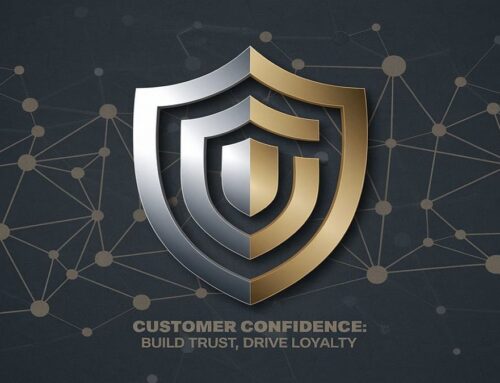
Big 5 Customer Experience Innovations You Can’t Ignore
Picture this: You walk into your favorite coffee shop and before you even place your order, the barista greets you by name and asks if you’d like your usual. It’s not just coffee, it’s an experience. Now, think about your business.
Are you delivering that same level of personalized, seamless and memorable customer experience? If not, you’re already falling behind.
In today’s hyper-competitive market, customer experience (CX) isn’t just a buzzword, it’s the backbone of business success. According to PwC, 73% of consumers say CX is a key factor in their purchasing decisions.
But here’s the catch: customer expectations are evolving faster than ever. What delighted customers yesterday might barely meet their expectations today.
So, how do you stay ahead? By embracing the big 5 customer experience innovations that are reshaping industries in 2025 and beyond. These innovations aren’t just nice-to-haves, they’re game-changers that can set your business apart.
Ready to transform your CX strategy? Let’s dive in.
Why Customer Experience Matters More Than Ever
Before we delve into the innovations, let’s talk about why customer experience is so critical in 2025 and beyond. Studies show that 86% of buyers are willing to pay more for a great customer experience and 73% of consumers say customer experience influences their purchasing decisions . These numbers make it clear: delivering a memorable experience isn’t just a nice-to-have, it’s a necessity.
Think about it: Would you choose a brand that makes you feel valued and understood over one that treats you like just another transaction? Most people instinctively choose the former. Now, ask yourself: Is your business keeping up with the rapidly changing expectations of modern customers? If not, don’t worry, we’ve got you covered. Let’s explore the five biggest innovations redefining customer experience today.
Innovation #1: Hyper-Personalization – Making Every Customer Feel Special
What is Hyper-Personalization?
Hyper-personalization takes traditional personalization to the next level by leveraging data, AI and machine learning to deliver tailored experiences at scale. It’s no longer enough to address a customer by name in an email; businesses must now anticipate needs, preferences and behaviors to create truly individualized interactions.
Why It Matters
Customers today expect brands to know them, not just superficially but deeply. According to a report by Epsilon , 80% of consumers are more likely to make a purchase when brands offer personalized experiences. Hyper-personalization allows businesses to meet these expectations while building stronger emotional connections.
How to Implement Hyper-Personalization
- Leverage Customer Data : Use CRM tools and analytics platforms to gather insights about your customers’ preferences, purchase history and browsing behavior.
- Segment Your Audience : Divide your audience into smaller groups based on shared characteristics, such as demographics, interests, or buying patterns.
- Automate Personalized Communication : Tools like HubSpot or Salesforce can help you send targeted messages, product recommendations and exclusive offers to specific segments.
Real-Life Example
Amazon is a master of hyper-personalization. Their recommendation engine analyzes user behavior to suggest products that align with individual preferences, driving 35% of their total sales through personalized suggestions.
Actionable Tip
Start small by personalizing email subject lines or offering product recommendations based on past purchases. Over time, expand your efforts to include dynamic website content and personalized ads.
Innovation #2: Omnichannel Experiences – Meeting Customers Where They Are
What is Omnichannel Customer Experience?
Omnichannel customer experience ensures seamless interactions across multiple touchpoints, whether it’s your website, social media, mobile app, or physical store. The goal is to provide a consistent and cohesive journey, regardless of how or where a customer engages with your brand.
Why It Matters
Modern consumers use an average of six different channels to interact with brands. If their experience feels disjointed or inconsistent, they’re likely to switch to a competitor. Omnichannel strategies ensure that every interaction reinforces trust and satisfaction.
How to Create an Omnichannel Experience
- Integrate Your Systems : Use unified platforms like Shopify or Adobe Experience Manager to sync data across all channels.
- Map the Customer Journey : Identify key touchpoints and ensure messaging, branding and service quality remain consistent throughout.
- Enable Cross-Channel Support : Allow customers to start a conversation on one channel (e.g., chat) and continue it on another (e.g., phone) without losing context.
Real-Life Example
Starbucks excels at omnichannel experiences. Customers can order via the app, pick up in-store and earn rewards seamlessly, all while enjoying personalized offers based on their purchase history.
Actionable Tip
Audit your current customer touchpoints. Are there gaps or inconsistencies? Focus on integrating systems and training staff to deliver a unified experience.
Innovation #3: Proactive Customer Support – Anticipating Needs Before They Arise
What is Proactive Customer Support?
Proactive support involves identifying potential issues before customers even notice them and addressing them in advance. This approach shifts the focus from reactive problem-solving to preventing problems altogether.
Why It Matters
Customers appreciate brands that go above and beyond to resolve issues before they escalate. A study by Zendesk found that 89% of customers feel more loyal to companies that resolve their issues quickly and efficiently. Proactive support builds trust and reduces churn.
How to Implement Proactive Support
- Monitor Customer Behavior : Use analytics to detect patterns, such as frequent complaints about a specific feature or delayed responses to queries.
- Send Preemptive Notifications : Inform customers about potential disruptions, such as shipping delays or system outages, along with solutions.
- Offer Self-Service Options : Provide FAQs, tutorials and chatbots to empower customers to find answers independently.
Real-Life Example
Apple sends automatic updates and security patches to its devices, ensuring users stay protected without needing to take action themselves.
Actionable Tip
Set up automated alerts for common pain points, such as abandoned carts or subscription renewals and follow up with helpful reminders or solutions.
Innovation #4: Emotional Connection – Building Relationships That Last
What is Emotional Connection?
Emotional connection refers to fostering genuine relationships with customers by appealing to their values, aspirations and emotions. Brands that connect on an emotional level inspire loyalty and advocacy.
Why It Matters
Research by Harvard Business Review shows that emotionally connected customers are 52% more valuable than highly satisfied ones. They’re more likely to recommend your brand, forgive mistakes and remain loyal over time.
How to Build Emotional Connections
- Tell Authentic Stories : Share your brand’s mission, values and impact through storytelling. Highlight real customer testimonials and success stories.
- Celebrate Shared Values : Align your messaging with causes or beliefs that resonate with your audience, such as sustainability or community support.
- Show Appreciation : Regularly thank customers for their loyalty through personalized messages, exclusive perks, or surprise gifts.
Real-Life Example
Nike’s “Just Do It” campaign taps into the universal desire for self-improvement and empowerment, creating a deep emotional bond with its audience.
Actionable Tip
Host a virtual event or launch a social media campaign celebrating your customers’ achievements. Make them feel seen, heard and appreciated.
Innovation #5: AI and Automation – Enhancing Efficiency Without Losing Humanity
What is AI and Automation in Customer Experience?
AI and automation streamline processes, reduce response times and enhance efficiency without sacrificing the human touch. From chatbots to predictive analytics, these technologies empower businesses to deliver faster, smarter and more scalable experiences.
Why It Matters
While technology enhances efficiency, maintaining a human element is crucial. According to PwC , 59% of consumers feel companies have lost touch with the human side of customer experience. Striking the right balance between tech and humanity is key.
How to Leverage AI and Automation
- Deploy Chatbots Wisely : Use AI-powered chatbots for routine inquiries but escalate complex issues to human agents.
- Analyze Customer Sentiment : Use natural language processing (NLP) to gauge tone and emotion in customer feedback, enabling more empathetic responses.
- Streamline Operations : Automate repetitive tasks like appointment scheduling or order tracking to free up resources for high-touch interactions.
Real-Life Example
Domino’s Pizza uses AI-driven tools to track orders in real-time and predict delivery times, ensuring transparency and convenience for customers.
Actionable Tip
Test AI tools like Drift (for chatbots) or Zendesk (for sentiment analysis) to see how they can enhance your customer interactions without compromising authenticity.
Conclusion: Stay Ahead with These Customer Experience Innovations
The landscape of customer experience is evolving rapidly and staying ahead requires embracing innovation while staying true to your core values. By implementing hyper-personalization, omnichannel strategies, proactive support, emotional connections and AI-driven solutions, you can create experiences that delight your customers and set your brand apart.
Remember, customer experience isn’t just about transactions, it’s about building relationships that last. Which innovation will you focus on first? Start small, measure results and watch your efforts transform your business.
Now go out there and create unforgettable experiences for your customers.
Frequently Asked Questions (FAQs)
Q1: What is customer experience and why does it matter?
A1: Customer experience refers to the overall perception a customer has of your brand based on every interaction they have with it. It matters because satisfied customers are more likely to remain loyal, refer others and contribute to your bottom line.
Q2: How can I improve my customer experience strategy?
A2: Focus on personalization, consistency, proactive support, emotional connections and leveraging technology to enhance interactions.
Q3: What role does AI play in customer experience?
A3: AI helps automate tasks, analyze data and provide insights that enable businesses to deliver faster, smarter and more personalized experiences.














